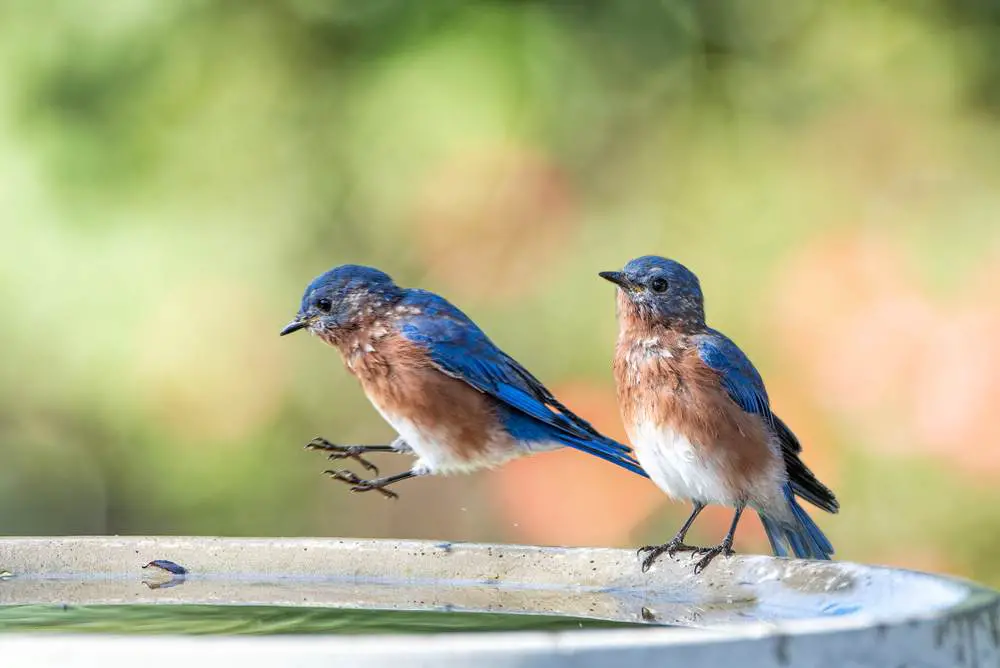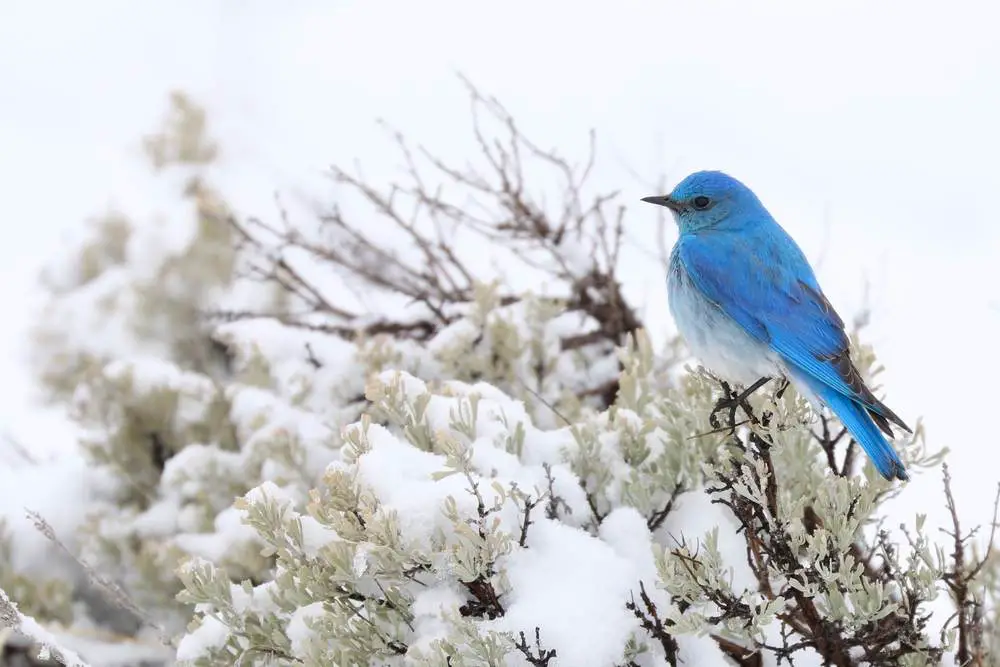When most people think of bluebirds, they think of a pair of bluebirds mating for life and raising offspring together. In fact, many people like to use these birds as an example that monogamy exists naturally amongst animals other than just humans.
So, do bluebirds mate for life? Around (90-95)% of bluebirds do mate for life. Although bluebirds may not always be loyal to their partners, their relationships are still very special.
While this type of bird has been thought of as monogamous, recent research has shown that this isn’t always the case.
If you’ve been comparing a faithful human relationship to a pair of bluebirds, you may be surprised about their actual relationship dynamic.
How Bluebirds choose their partners?

While most bluebirds do mate for life, their relationship isn’t always a faithful one.
It’s important to note that mating for life does not mean only copulating with one partner.
Mating for life means that the bonded pair will continue to mate with each other year after year and will both contribute to raising their offspring together.
Although bluebirds may not always be loyal to their partners, their relationships are still very special.
Bluebirds have to consciously choose each other as partners before they decide to do any breeding together.
Like most heterosexual relationships, it is the male bluebird that must try to win over the female bluebird.
Winning over a female is done simply by proving that the male can be a good provider.
The male bluebird does this by collecting nesting materials into a potential breeding cavity for the female bluebird to inspect and approve.
If the female accepts the male’s offering, she will then begin to bring her own nesting materials into the breeding cavity to complete building the nest.
A female’s acceptance of the male’s offering does not always signify a true bond.
It is when the male bluebird begins offering her food that they are officially bonded as partners.
Once their bond is formed, these birds will become almost inseparable during the breeding season and will often be seen together flying, looking for food, and eventually raising their offspring.
Bluebirds During Mating Season

Mating to produce offspring is why bluebirds choose to form a lifetime partnership, however, the need for producing offspring can change their relationship.
While over 90% of bluebirds do mate for life, there are circumstances that can contribute to them mating with other partners.
If a pair is unable to nest successfully during the breeding season, a large number of them will try to find a different pair in hopes of successful nesting. Some pairs may also choose to stay together and try again.
Even those who successfully nest with each other may still choose to mate with another bluebird outside of their original partnership.
This is where bluebird relationships may begin to seem complicated, however, the reason for this is all the same.
Like most other animal species, bluebirds just want to produce as many offspring as they can.
If they are unable to breed successfully with their partner, there is simply no reason for them to stay together.
On the contrary, if a pair of bluebirds successfully produce offspring, they may still try to breed with others who have not had as much luck.
Of course, they do not usually agree to this and can be commonly found avoiding each other’s attention to sneak around into another bluebirds nesting grounds.
On rare occasions, there have also been partnerships that include two females to one male and two males to one female.
It is unsure why the bluebirds result to this kind of relationship and what their individual roles in raising the offspring are, however, their need for producing successful offspring is all the same.
Sometimes, you might have observed birds flying into windows. Do you know, Why do Bluebirds fly into windows?
How Death Affects Their Relationship?
Most bluebirds will mate for life if both members of the pair are still alive. That being said, when one bluebird dies, the partner does not decide to retire and live a life of solitude.
In fact, bluebirds don’t spend much time grieving their fallen partner at all and can be found with a new partner within hours of their old partner dying.
Death among bluebird pairs is one of the most common reasons why a bluebird will switch partners.
As mentioned, their strong desire to successfully mate and produce offspring is what drives them into another relationship.
The average bluebird can live between 6 – 10 years, however, the most common occurrences of fatality occur within the first year.
If a pair is able to live past the dangers of their first year, their relationship can last up to 10 years.
On the contrary, if a bluebird’s partner happens to die every year, this can result in them having multiple partners throughout their lifetime.
Overall, bluebirds prefer to find a lifetime partner as this ensures that they will be able to successfully produce offspring during each breeding season.
Although we may like to look at bluebirds to prove that monogamy works in nature, their relationships are purely for breeding purposes.
Are bluebirds monogamous?
Bluebirds give birth to 2-3 baby bluebirds per season. They usually build their baby nest and their pairing nest at different sites, most of them are above the previous nest.
Bluebirds are said to be monogamous and most of them breed together for more than one season. However, they can change their mates during a season, if needed, to raise another brood.
Starting from March till August, they are seen to be nesting. During this time they incubate their eggs at a temperature ranging from 98 degrees to 100 degrees Fahrenheit.
Related Questions
Do Bluebirds have more than one mate? Not really, eastern bluebirds were once looked up as monogamous but many scientists have discovered that males mate with several other female bluebirds. Even females have multiple broods from different mates.
What happens when bluebirds lose mate? In case the female loses the male, they don’t look for a different mate initially. They leave their nest and create another one at a different location.
At what age do bluebirds mate? Bluebirds become mature in just 9 months for mating. However, they generally mate when they become one year old.


